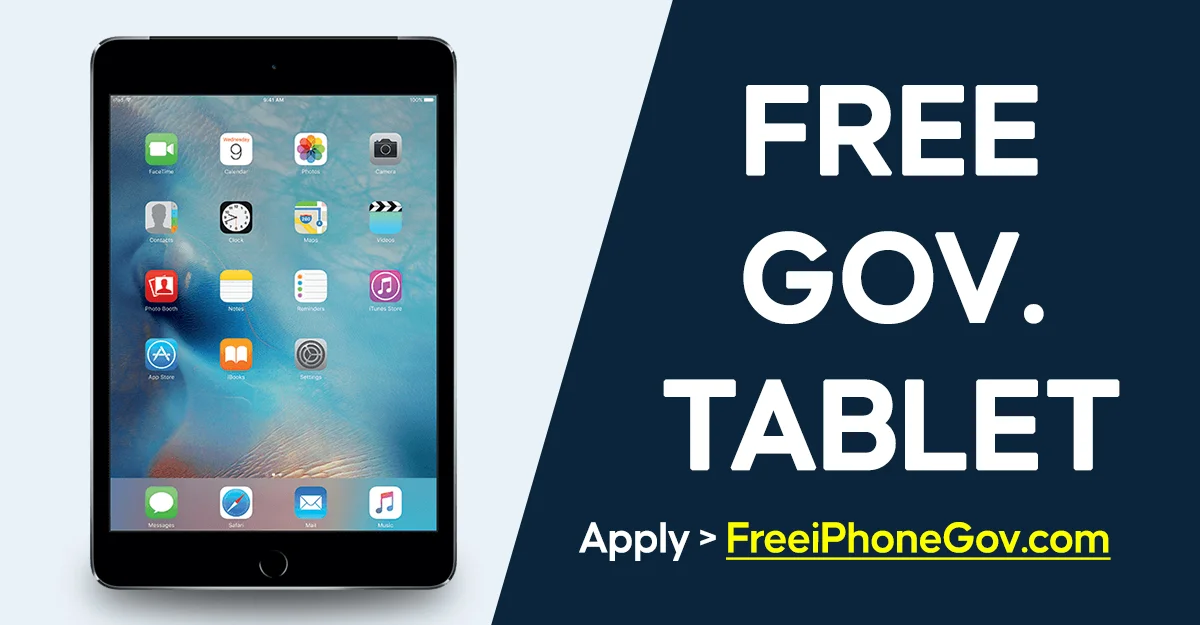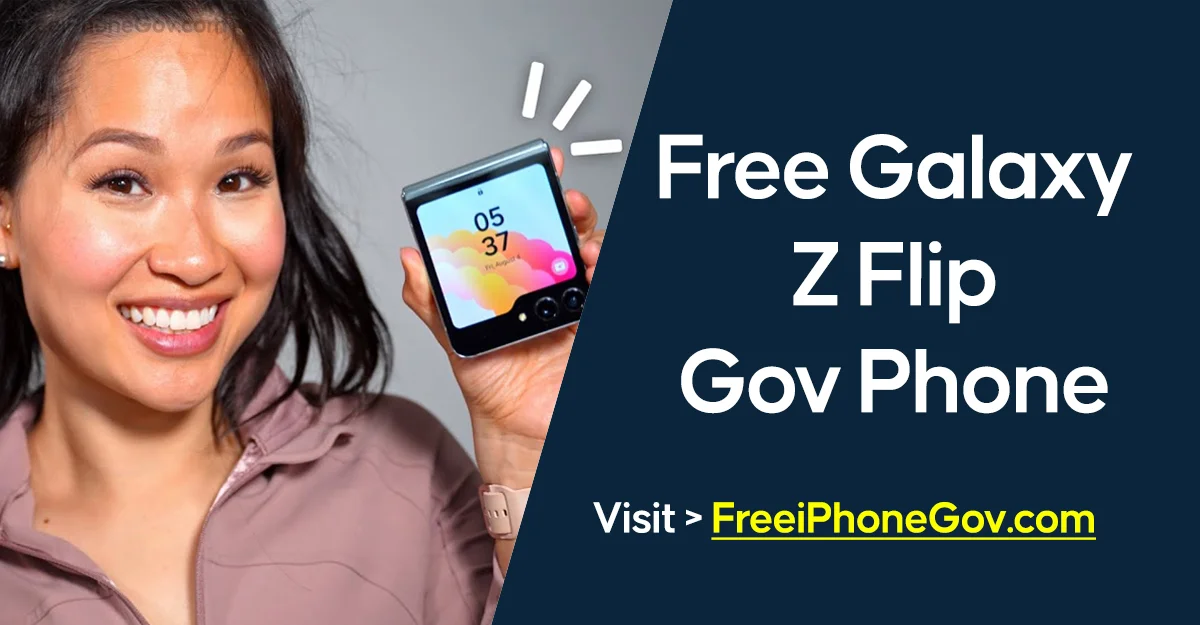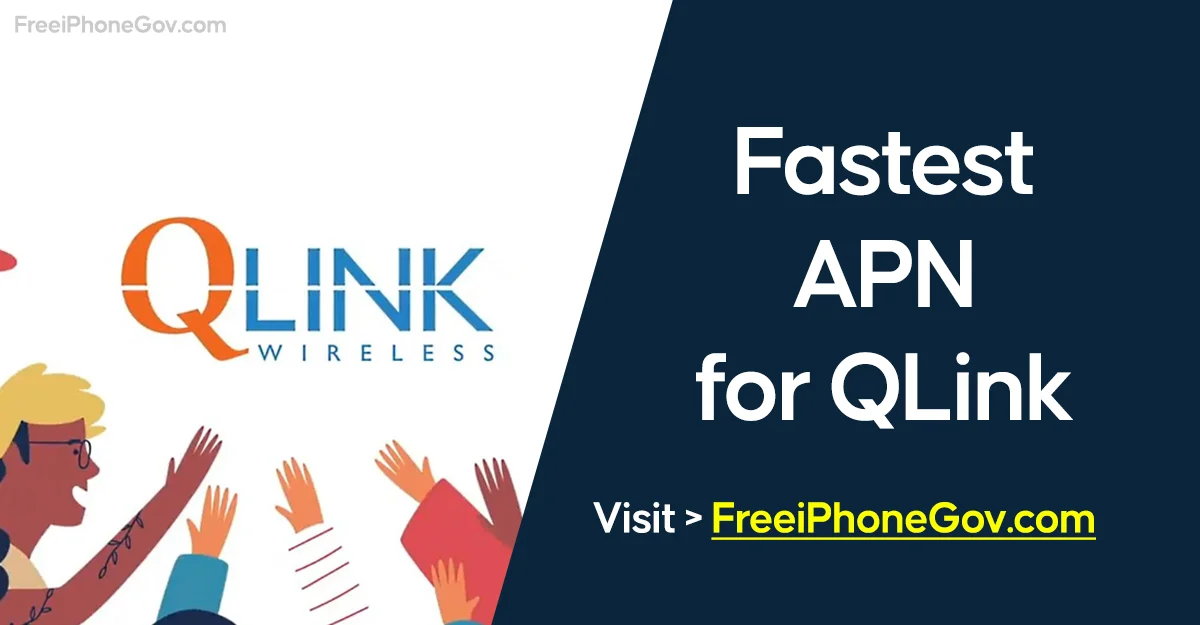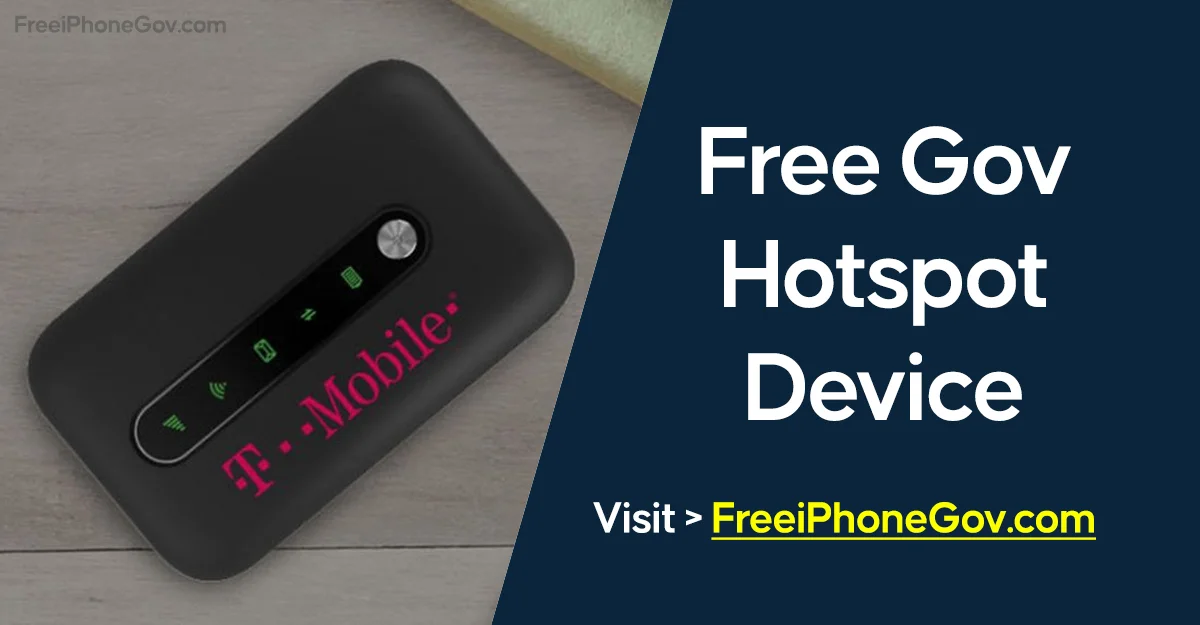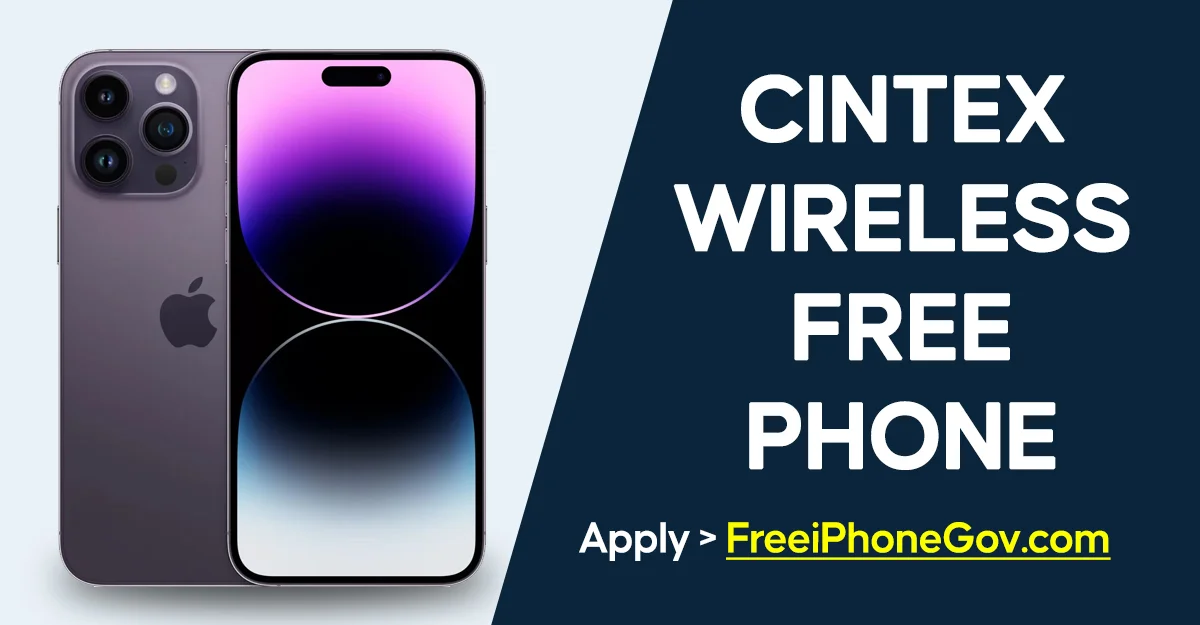Free Government Phone and Tablet Combo
To qualify for a free government phone and tablet combo, you must meet certain criteria, typically linked to participation in federal assistance programs like SNAP or Medicaid. When applying, it’s necessary to provide documentation that verifies your income or confirms your participation in these qualifying programs.
It’s also important to apply through reliable providers to ensure you get a quality device. In an era where technology is essential for everyday tasks from communication and education to accessing important services having a smartphone and tablet can greatly improve your life.
Many people and families who find it challenging to afford such technology will find relief through government initiatives designed to provide free or subsidized devices, helping close the gap for those who need these resources the most. This overview provides insight into securing a free government phone and tablet combo.
How to Get a Free Government Phone and Tablet Combo?
To obtain a free phone and tablet from the government, you must first determine your eligibility and understand how to apply. Below is a simple method on securing a free government phone and tablet combo:
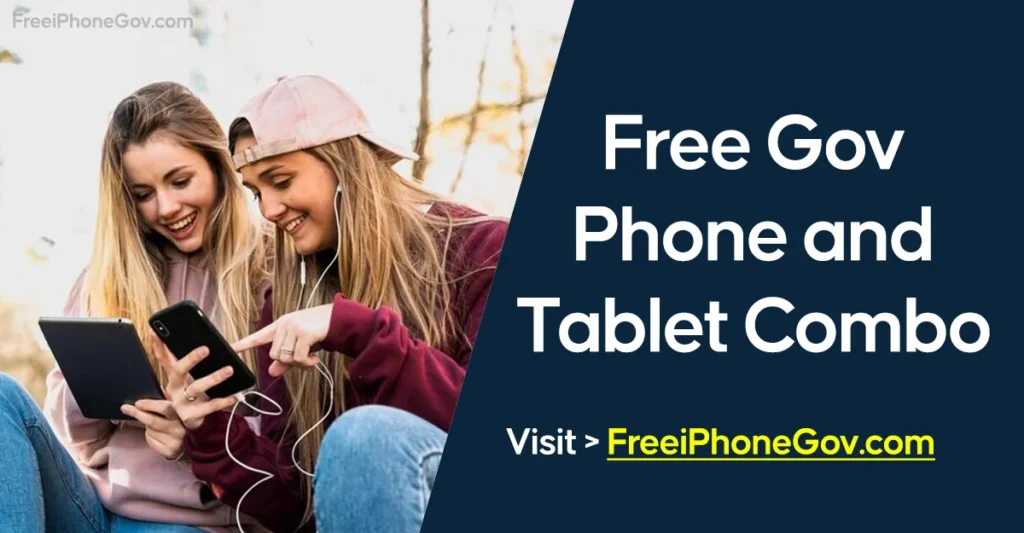
Step 1: Lifeline Assistance Program:
This federal program provides low-income individuals with discounted or free telecommunications services. Originally limited to phone services, the program now sometimes includes broadband access and devices like smartphones and tablets in certain areas.
Step 2: Verify Your Eligibility:
Eligibility for the Lifeline Program can differ by state but is generally open to individuals who participate in certain federal assistance programs, including:
- Veterans Pension and Survivors Benefit
- Federal Public Housing Assistance (FPHA)
- Medicaid
- Supplemental Nutrition Assistance Program (SNAP)
- Supplemental Security Income (SSI)
You can check if you qualify through the National Verifier website or by reaching out to your state’s designated Lifeline administrator.
Here’s how to acquire a free government phone and tablet through the Lifeline Assistance Program:
Step 3: Select a Service Provider:
After confirming your eligibility, choose a provider in your state that participates in the Lifeline program. These providers offer plans supported by Lifeline, which may include a free tablet and phone. There are few famous providers available including Q-Link Wireless, SafeLink and Assurance Wireless which you can choose.
Step 4: Apply for Lifeline Service:
The application process varies by provider. You can apply online, by mail, or in person. You’ll likely need to provide proof of your eligibility, such as documentation of participation in qualifying assistance programs or proof of income.
Step 5: Receive Your Devices:
Once approved, you’ll receive your free phone and tablet from the provider you selected. These devices usually come with pre-installed apps and features essential for communication and basic internet use.
Step 6: Maintain Your Eligibility:
Lifeline benefits require regular recertification to continue receiving them. You’ll need to verify your eligibility yearly or as directed by your state’s Lifeline administrator to maintain your service.
Step 7: Look for Additional Opportunities:
Besides Lifeline, other local or state programs may offer free or discounted technology to those in need. Exploring these additional resources can help you maximize your benefits.
Also Read: How To Get Free Government Tablets?
Government Benefit Program Eligibility for Free Phone and Tablet
This program includes various benefits that allow eligible individuals to receive a free smartphone and tablet at no cost. Here are the key programs and their requirements:
Lifeline Benefits Program:
i. Eligibility Based on Income:
You qualify for Lifeline assistance if your income is at or below 135% of the Federal Poverty Guidelines. Eligibility criteria vary based on household size and state of residence. See the table below for specific income thresholds for 2023.
| Household Size | 48 Contiguous States, D.C., and Territories | Alaska | Hawaii |
|---|---|---|---|
| 1 | $19,683 | $24,584 | $22,640 |
| 2 | $26,622 | $33,264 | $30,618 |
| 3 | $33,561 | $41,945 | $38,597 |
| 4 | $40,500 | $50,625 | $46,575 |
| 5 | $47,439 | $59,306 | $54,554 |
| 6 | $54,378 | $67,986 | $62,532 |
| 7 | $61,317 | $76,667 | $70,511 |
| 8 | $68,256 | $85,347 | $78,489 |
| Additional Person | +$6,939 | +$8,681 | +$7,979 |
To apply for Lifeline, you must show proof of your income, like a tax return or 3 recent pay stubs.
ii. Federal Assistance Programs:
If you or a family member participate in any of the following programs, you qualify for Lifeline:
- Supplemental Nutrition Assistance Program (SNAP), previously known as Food Stamps
- Medicaid
- Supplemental Security Income (SSI)
- Federal Public Housing Assistance (FPHA)
- Veterans Pension and Survivors Benefit
To apply for Lifeline, you need to provide proof of participation, like a benefits letter or official documents.
iii. Tribal Assistance Programs:
You qualify for Lifeline if your household income is at or below 135% of the Federal Poverty Guidelines and you live on tribal lands, or if you or a family member participate in any tribal assistance programs. Relevant programs include:
- Bureau of Indian Affairs General Assistance
- Tribal Temporary Assistance for Needy Families (Tribal TANF)
- Food Distribution Program on Indian Reservations
- Head Start (if household meets the income requirement)
Proof of participation, like a benefits letter or official documents, should be provided when applying for Lifeline.
iv. Qualifying Through a Child or Dependent:
If your child or dependent is in any of the programs mentioned above, you can qualify for Lifeline. When you apply, you will need to provide proof of their participation.
SNAP Benefits Program Qualifications:
The Supplemental Nutrition Assistance Program (SNAP), previously called the Food Stamp Program, provides assistance to individuals and families who meet certain income requirements. Eligible participants can receive assistance which includes provision of essential devices like smartphones and tablets.
Eligibility and Benefits:
- Income Requirements: Eligibility for SNAP benefits is primarily based on the household’s income and certain expenditure levels.
- Benefit Calculation: A family’s SNAP benefits are calculated based on their income and specific expenses.
SNAP Benefits Overview for Fiscal Year 2024 (Starting October 2023):
| Household Size | Maximum Monthly Benefit | Estimated Average Monthly Benefit |
|---|---|---|
| 1 | $291 | $202 |
| 2 | $535 | $372 |
| 3 | $766 | $598 |
| 4 | $973 | $713 |
| 5 | $1,155 | $852 |
| 6 | $1,386 | $1,052 |
| 7 | $1,532 | $1,091 |
| 8 | $1,751 | $1,196 |
| Each additional person | +$219 |
To apply for SNAP benefits and learn about the qualifications for the ACP Benefit Program, follow these steps:
Apply for SNAP Benefits:
To apply for SNAP, you should contact the agency in the state where you live since each state has its own forms and application process. You can contact your state agency in several ways:
- Checking out your state agency’s website. Some states offer online application forms which you can complete on the state agency’s website.
- Visit near SNAP office to your location.
- Call the toll-free SNAP Information hotline for your state.
ACP Benefit Program Qualifications:
Starting February 7, 2024, the Affordable Connectivity Program (ACP) is no longer accepting new applications. Before this date, people who qualified for ACP benefits could also be eligible for Lifeline.
Run by the Federal Communications Commission (FCC), this program offered discounts on phone, internet, or bundled services. The discount was up to $9.25 per month, or up to $34.25 for those living on eligible tribal lands.
Also Read: How to Get Free Tablet for Seniors?
Applying for the Affordable Connectivity Program:
From February 7, 2024, the Affordable Connectivity Program (ACP) will no longer accept new applications. However, current participants will continue to receive benefits until the program’s funds are exhausted.
The funding is expected to last until around April 2024, but this may change depending on available resources and demand.
Medicaid Eligibility Overview:
Medicaid, along with the Children’s Health Insurance Program (CHIP), serves as a crucial source of health coverage for about 72.5 million Americans. This program covers various groups, including children, seniors, people with disabilities, parents, and pregnant women. It is the largest health coverage provider in the United States.
Federal regulations require states to include certain groups in their Medicaid coverage. These required groups usually include low-income families, pregnant women and children who qualify, and those receiving Supplemental Security Income (SSI). States can also choose to cover other groups, like children in foster care who don’t meet the usual criteria and people getting home and community-based services.
Following the Affordable Care Act of 2010, states received the option to expand Medicaid coverage to nearly all low-income individuals under the age of 65, with eligibility for adults up to 133% of the federal poverty level (FPL). For children, eligibility was raised to at least 133% of the FPL across all states, though many states choose to cover children at higher income levels. Most states have opted to expand coverage to adults, and those that haven’t yet done so can still decide to expand at any time. It’s important to check current eligibility criteria for low-income individuals in your state regarding Medicaid.
Section 8 Housing Eligibility Overview:
Section 8 housing offers essential support to numerous American families, enabling them to afford safe and clean housing. While eligibility requirements can vary slightly from one Public Housing Agency (PHA) to another, there are several common criteria that applicants must meet:
- Income Qualifications: Applicants must meet specific income limits, which typically relate to the median income of the area and vary depending on family size.
- Disability Status: Families that include individuals with disabilities may have specific considerations under Section 8.
- Nationality: Applicants need to meet certain citizenship or eligible non-citizen requirements.
- Criminal Record and Past Evictions: Having a criminal record or past evictions can affect eligibility, especially if the offenses are related to housing or pose a threat to other tenants.
- Residence Status: Applicants must prove their residence status and show that they will benefit from housing assistance in their current location.
If you are considering applying for Section 8 housing assistance and need more clarity on whether it is the right choice for you, understanding these prerequisites is crucial. This information can assist you to analyze your current situation and decide whether to apply for aid.
Applying for a Housing Choice Voucher:
To apply for a housing choice voucher, contact your local public housing agency (PHA). They can assist you with the application process and keep you updated about the current status of the submitted application by you. Due to the limited resources available to the Department of Housing and Urban Development (HUD) and local housing agencies, it is common to encounter waitlists and extended waiting periods for voucher availability.
When the demand exceeds the available resources, PHAs may temporarily close their waiting lists if there are more families waiting than can be accommodated. This helps keep the application process organized and makes sure resources are used efficiently.
Also Read: How to get Free Galaxy Z Flip Government Phone?
Non-Profit Programs Offering Support for Technology Access:
Several non-profit programs focus on supporting low-income individuals and families by providing access to technology, including smartphones and tablets, either for free or at reduced costs. Various government agencies and non-profit organizations run these programs:
ConnectHomeUSA:
This program helps families with school-age children get access to technology. It provides affordable internet services, devices, and digital literacy training. While ConnectHomeUSA does not directly offer free phone and tablet combos, it helps connect eligible families to resources where they can obtain these devices at lower costs.
EveryoneOn:
EveryoneOn is a non-profit group that helps low-income families get affordable internet, devices, and digital training. They work with different service providers and might offer discounted or refurbished smartphones and tablets.
Assistive Technology Programs:
Some state programs provide assistive technology devices to people with disabilities. These programs might not provide free phone and tablet combos to everyone, but they do supply such devices to eligible individuals who need them for communication or accessibility reasons.
Local Community Programs:
Many local governments and community non-profits run programs to reduce the digital divide. They might offer free or discounted smartphones, tablets, or internet services to low-income residents.
To benefit from these programs, it’s important to research and ask about them locally, as availability and eligibility can vary by location. Eligibility often depends on factors like income level, participation in other government assistance programs, or belonging to certain demographic groups.
Documents Required to Obtain a Free Government Phone and Tablet:
When applying for a free government phone and tablet through programs like ACP or Lifeline, it’s essential to provide evidence that verifies your eligibility. Here are the types of documents you will need to gather:
Program Eligibility Documents:
These must confirm your participation in a qualifying government assistance program. Required details include your full name, the name of the program, the issuing government agency, and the date the document was officially issued. Examples of such documents include:
- Benefit award letter from the qualifying program
- Approval letter concerning your income from the eligible program
- Statements or verification letters that detail the benefits you receive
- Official correspondence from an eligible educational institution
Household Income Eligibility Documents:
To demonstrate income eligibility, these documents should show that your household income is at or below certain thresholds, such as 135% or 200% of the federal poverty guidelines. Make sure these documents include your full name and annual income. Suitable documents include:
Identification Documents:
These are needed to verify your identity and should include your full name and date of birth. Acceptable types of identification can be:
- Passport
- U.S. citizenship or naturalization certificate
- Driver’s license
- Permanent Resident Card (Green Card)
- State, federal, military, or tribal ID
- Birth certificate
Proof of Residency Documents:
Documents that confirm your physical address must include both your full name and your residential address. Examples include:
- Utility bill
- Mortgage or lease statement
- W-2 form or tax return showing your address
- Federal, state, or tribal tax return from the previous year
- Recent pay stubs
- Social Security benefits statement
- Pension or retirement benefits statement
- Statement of current income
Gathering these documents before you apply can streamline the process and help ensure that your application is processed efficiently.
How to Apply for a Free Government Phone and Tablet Combo:
To apply for a free phone and tablet combo from the government, follow these essential steps:
- Research Eligibility Criteria: First, identify whether you fit the eligibility requirements set by the government. These criteria often focus on low-income households, people with disabilities, or those in certain government assistance programs.
- Find Government Programs: Search for government initiatives that provide free phones and tablets. These could be managed by local, state, or national bodies.
- Gather Necessary Documents: Put all required documents in one place that demonstrate your eligibility. This could include proof of income, residence, identification, and any relevant documentation from government assistance programs you are part of.
- Complete the Application: Fill out the application form thoroughly and accurately. Make sure all information is accurate to prevent delays in the review process.
- Submit your Application: Submit your application by following the given instructions. This might mean sending it by mail, submitting it online, or delivering it in person at a specific location.
- Wait for Review: After submission, your application will be reviewed to verify your eligibility. This review process can vary in duration, so patience is necessary.
- Receive Approval: If your application is approved, you will get a notification with instructions on how to get your phone and tablet combo.
- Claim Your Devices: Retrieve your devices as instructed, either by picking them up at a designated place or by receiving them via delivery.
- Use Responsibly: Once you have your devices, it’s important to use them responsibly and adhere to the terms set by the program. This ensures you maintain eligibility and can continue to benefit from the service.
Always follow the specific instructions from the relevant government program, as details and procedures can differ.
Lifeline Providers Offering Free Government Phone and Tablet Service
There are several Lifeline phone service providers, each offering different services and plans. Top providers include:
- Access Wireless free phone and tablet
- Airtalk Wireless free phone and tablet
- SafeLink Wireless free phone and tablet
- Assurance Wireless free phone and tablet
- TruConnect free phone and tablet
- Q Link Wireless free phone and tablet
- Stand Up Wireless free phone and tablet
Also Read: How to Get Free Government Hotspot Device?
What Types of Free Phones Can I Get from the Government?
People receiving free phones from government programs cannot choose or confirm the exact brand or model they will get. The service provider allocates a free phone based on availability, eligibility, and the applicant’s state of residence.
The types of phones typically available for free include:
- Apple iPhone 7 Plus
- Samsung Galaxy S9
- Apple iPhone 7
- Samsung Galaxy S8
- Apple iPhone 6s Plus
- Samsung Galaxy A51
- Motorola G Stylus 2020
- Apple iPhone 7 Plus
- Samsung Galaxy S9
What is the best free government tablet you get
Unlike the process for obtaining free tablets, candidates cannot select the exactly same tablet model they will receive. It depends on if you are eligible and what device is available in stock. However, the following types of tablets are frequently offered:
- Apple iPad Air
- Samsung Galaxy Tab S
- Apple iPad Mini
- Apple iPad Air 2
- Alcatel Joy Tab 2
- Sky Pad 8
- Sky Elite T8 Plus
- Apple iPad Mini 2
- Samsung Galaxy Tab E
- Apple iPad Mini 3
What is the Government phone and tablet bundle
NO contract, NO monthly bills & NO fees
- UNLIMITED Data
- NEW Tablet
- Keep Your Phone & Number
- FREE SIM Card & Activation
- Voicemail & 3-Way Calling
- UNLIMITED Talk & Text
- UNLIMITED Picture Messaging
- Access to 10 Million FREE Wi-Fi Locations
- Emergency Service Calls to 911
Getting a Phone Plan with Free Phones:
Outside the Federal Lifeline Program, many service providers offer family plans that include free phones, an option that can be especially beneficial for families. Here’s how to take advantage of such offers:
- Identify Participating Providers: Look for service providers that participate in programs offering free phones with family plans. These providers typically advertise such deals, especially as part of promotional campaigns.
- Review Plan Details: Examine the specifics of these family plans. They often provide multiple lines of service and may include free phones for each line, sometimes even pairing them with tablets.
- Assess Family Needs: Consider how many people in your household need phone service and whether the plan meets your communication requirements. This helps in choosing the right plan that maximizes benefits for all family members.
- Understand the Terms: Make sure to understand all the terms and conditions related to the free phones before signing up. This includes any commitments, such as contract length and monthly service fees.
- Apply for the Plan: Once you find a suitable plan, apply according to the provider’s instructions. You can do this online, over the phone, or in person at a retail location.
- Activate the Service: After approval, follow the steps provided by the service provider to activate the lines and receive your free phones.
- Utilize Cost Savings: By receiving a free phone with each line of service, households can significantly reduce the overall cost of their communication services, making it more affordable for everyone to stay connected.
By carefully selecting a family plan that includes free phones, families can enhance their connectivity without bearing the high costs typically associated with multiple service lines.
FAQs
What is required to qualify for a free government phone and tablet combo?
To qualify, you must participate in federal assistance programs like SNAP or Medicaid. Documentation to verify your income or program participation is necessary.
How do I apply for a free government phone and tablet combo?
Determine your eligibility through programs like the Lifeline Assistance Program, select a participating service provider, and submit an application with the required documentation.
Which service providers offer free government phones and tablets?
Providers include Access Wireless, Q Link Wireless, TruConnect, Assurance Wireless, Safelink Wireless, and more.
What kind of phones and tablets can I get through these programs?
Available phones include models like Apple iPhone 7 and Samsung Galaxy A51. Tablets can include Apple iPad Air and Samsung Galaxy Tab S.
What documents do I need to apply for these programs?
You need documents proving your income, identity, residency, and participation in qualifying assistance programs. Examples include tax returns, pay stubs, and benefit letters.
Are there any additional opportunities to obtain free or discounted technology?
Yes, programs like ConnectHomeUSA and EveryoneOn, as well as various local community initiatives, offer support for low-income families to access affordable technology.
Final Words
The free government phone and tablet combo program is more than a provision of devices, it’s a step towards empowerment, inclusion, and creating opportunities. This program helps eliminate the barriers to connectivity, enabling individuals to remain connected, stay informed, and actively participate in our digital society.
Smartphones and tablets are crucial for full participation in today’s world. Qualified individuals can get free or discounted telecommunications services, including smartphones and tablets, through the Lifeline Assistance Program.
By understanding how to meet eligibility requirements, selecting a provider that participates in the program, and navigating the application process efficiently, you can benefit from this initiative. Obtaining a free government phone and tablet can significantly enhance your connectivity, thereby improving your overall quality of life and helping to close the digital divide.

